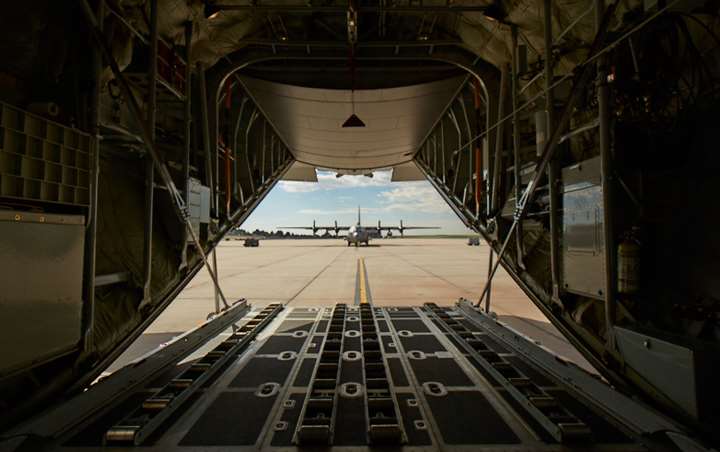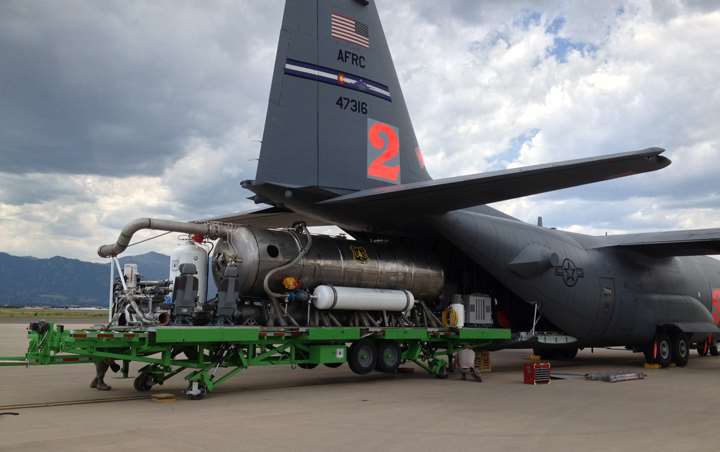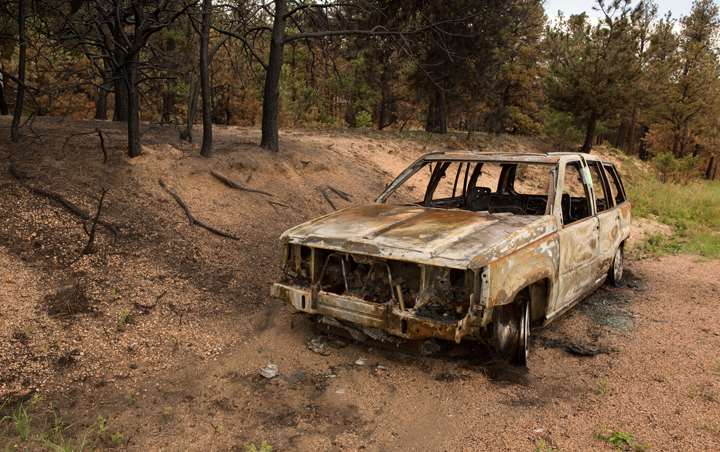
The 2012 fire season was the second longest fire season on record for the Department of Defense Modular Airborne Fire Fighting Systems (MAFFS). From June to September, we fought fires in 10 states, from South Dakota to California. June 2012 was a particularly bad month for the city of Colorado Springs, and our Air Force MAFFS C-130 crews were instrumental in helping quench the destructive blazes there (see NRA American Warrior Number 9 ).
Following our annual MAFFS training in April 2013, we learned this year was likely to produce another long fire season. In fact, many of us MAFFS silverbacks didn’t make vacation plans for July through September, knowing what might be in store.
On June 11, I was in the hangar packing parachutes and inspecting airdrop loads for the week’s missions. It was an ordinary day until one of my senior parachute riggers asked if I had heard about a fire in Black Forest, a community just 10 to 12 miles north of Peterson Air Force Base. Knowing that a large fire burning about 60 miles south of us was causing heavy smoke in the air, I thought he was mistaken. But an hour later I went outside and saw the smoke plume north of the base. Having grown up in Black Forest, I knew there was a good local fire department that should have things under control in no time. I pushed it out of my mind and went back to work.
When I started home later that afternoon, however, I saw a large smoke plume to the north. That’s always a bad sign. I called my brother, a Colorado Springs police officer, only to learn he was too busy assisting with evacuation to talk. Another bad sign.
Knowing chances were high we would be flying soon, I made a call to the flying squadron scheduler and told him I was planning on being on MAFFS 2 and he should start building crews. That evening, my wife, dogs and I went for a short ride to see how things were going. Even from five to seven miles away it looked bad—really bad. I called my parents and sister in the area to let them know this was no small fire and that it was, in fact, as bad as the news had made it out to be.
A short time later, I got the call from Luke, our chief of MAFFS. “Be in as soon as you can and ready to load planes and fly.” Just like June 2012.
I quickly made several calls to be sure we had more than enough people to drive forklifts and trailers, turn wrenches and perform other necessary duties. Then I tried to get some sleep, but knowing the fire had already burned three to four miles of forest where friends and family lived made for a restless night.
We arrived early and began the process of getting the aircraft pre-flighted and the MAFFS systems loaded, installed and tested. Normally this process takes a few hours, but, like last year, everyone was there to help where they could. Soon the planes and MAFFS systems were ready, and we were airborne.
The crew I was flying with is made up of a great bunch of guys. Two of them, the navigator and other loadmaster, live on the outskirts of Black Forest. The loadmaster’s home had been evacuated the previous afternoon when the fire first started. The navigator was on a pre-evacuation alert. If he got the call to evacuate, his wife and children would have to do so without him. Flying MAFFS is always rewarding, but doing it to try and save the homes of fellow crew members made it that much more important.
A DC-10 tanker had just started flying and getting fire retardant (mud) and fuel from the firebase in Pueblo, Colo. We would be going to a firebase on the west side of Denver for retardant and fuel. We landed and picked up necessary supplies: 3,000 gallons of mud and some Gatorade. After a 20-minute flight, we were flying over the west flank of the Black Forest fire.
Much of what I saw from above looked like the moon. The only clear indication that this was the earth and not a lunar landscape was the fact that I recognized roads. Then, I recognized homes, or what was left of them. It was an absolutely gut-wrenching feeling.
The mood in the plane was somber but businesslike. With little fanfare, we tucked up behind the lead airplane and dropped all 3,000 gallons of mud right where its crew wanted it—exactly where the ground crews needed it. That’s always a good feeling.
About 50 minutes later we were right above the fire with our other plane, MAFFS 5, right behind us. We were trying to save our current drop for a house that was being threatened. While the lead plane’s crew was communicating with firefighters on the ground, I again looked outside. The elementary school I had attended in the early ’80s was still there, but the areas around it were devastated. Looking about a mile east of the school towards my childhood home, all I saw were burned homes and trees. Again, we put the 3,000-gallon load right where it was needed, as did MAFFS 5.
The following day, both C-130s, several helicopters from nearby Fort Carson and the DC-10 went back to work on the fire, which was still classified as zero percent contained and was threatening to skip a highway toward more homes and dense forest. Our order of the day was more structure protection.
With all those air assets flying, the radios were packed with chatter. But one of the radio conversations with the ground firefighters and our pilots caught my attention: “Directly on the house?”
“Yes,” came the reply. “It is easier to repaint than rebuild.”
The final result of the Black Forest fire was two deaths, 511 homes destroyed and more than 14,000 acres charred. This proved to be the most destructive fire in Colorado history, pushing last year’s Waldo Canyon fire to second spot. At press time for this issue, the cause of the Black Forest fire was still unknown, but Mother Nature has been ruled out.
Before we could catch our breath, another fire popped up just west of Denver. This one would be called the Lime Creek Fire. In route, I realized we were only a few miles west of my sister’s house. This summer was shaping up to be way too personal. After a few days, that fire was brought under control with only 511 acres burned—and my sister’s family and home safe.
After nine straight days of flying, I got a day off from the plane. I went into work early and attended the morning fire brief. Another large fire had popped up in southern Colorado, and we decided to put up a firebase at Peterson AFB. All of us hustled to get everything ready to go for the Forest Service. As familiar faces began arriving, I realized it was almost exactly a year ago that we were going through this same routine, at this exact same location, for the Waldo Canyon fire.
The following day was another non-flying day for me. All the roadblocks and restrictions had been lifted the day before, so my chief and I decided to drive out to Black Forest to look around.
My childhood home had survived—but just barely. Less than a mile away, a friend of ours who had left the squadron many years ago also was fortunate that his house had survived. However, the homes on either side of his were gone. It is a strange thing how fire behaves.
The area near my elementary school was the hardest hit, and was also where the fire’s only two fatalities occurred. The husband and wife, Marc and Robin Herklotz, were acquaintances of mine. We had shot some IDPA and USPSA matches together 5 to 10 years earlier. Marc was former Air Force and now worked as a civilian at Schriever AFB. Robin was a 1994 Air Force Academy grad who also worked at Schriever.
Trying to lighten the mood, I told my chief about the house we dropped directly on. He suggested we go find it. After 10-15 minutes we found the house.
It was still there—in need of repainting but not rebuilding.


































